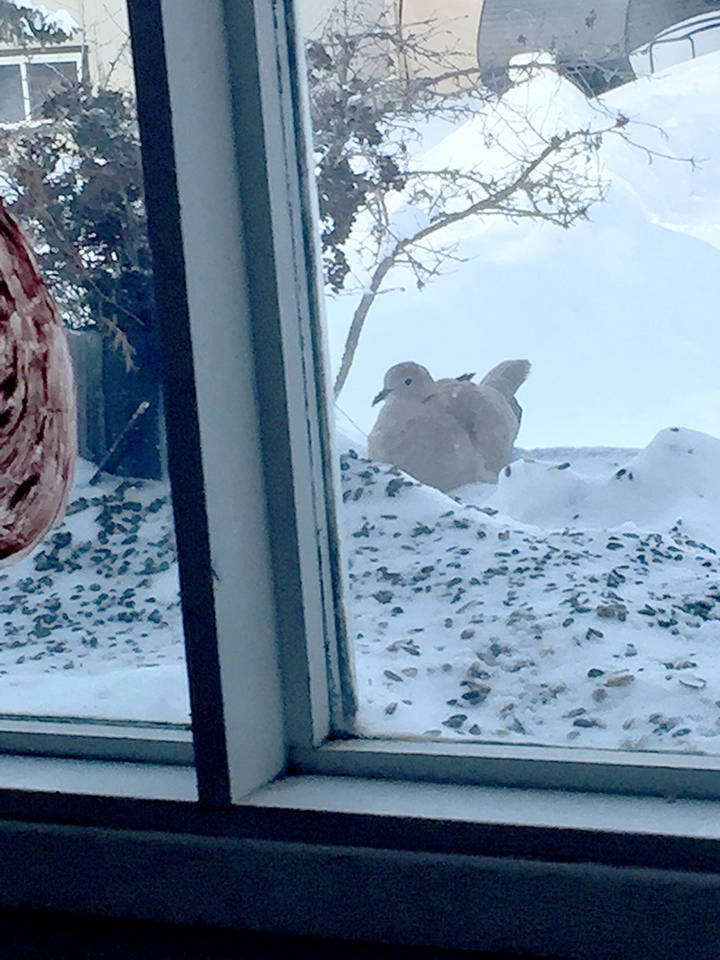One hundred and fifty six. That’s how many black sunflower seeds this Eurasian Collared Dove gulped into it’s gizzard at my feeder during the cold snap. Yes, I counted. I was curious to know when it would stop. But where did all those seeds go? There is no way it ate them properly, and could its stomach hold that many seeds?
According to the Cornell Lab of Ornithology all birds have a gizzard which is the muscular part of their stomach, but some birds also have a stretchable sac called a crop that allows them to store food. Pigeon and dove adults even make a food called crop milk to feed to their young.
These beautiful birds are like the Mourning Dove found in the prairies but have a square tail rather than the pointed tail of their cousins, a distinct ring part way around their neck, hence the name and are a bit chunkier.
Eurasian Collared Doves were thought to have originated in India and expanded across Europe in the 1700s. Often kept as pets a few doves were introduced to the Bahamas in the 1970s and made their way to Florida in the 1980s.
Evelyn Jaarsma, Houston’s local bird expert, has been keeping track of the first bird of every species each year for over thirty years. According to her records the first sighting of Eurasian Collared Doves in Houston was in May of 2010. A relative newcomer to this area in just 10 years they are a common sight with flocks of up to 40 birds perching in trees around the duck pond and frequenting feeders all year round.
As winter stretches into February I am curious to see how many other birds brave our northern cold. I will continue to keep my feeder stocked with black sunflower seeds, which seem to be a favorite of Chickadees, Juncos and of course our Dove friends. And on Feb. 14 I will be joining bird watchers of all ages in the Great Backyard Bird Count to give a real-time snapshot of where the birds are. Will you join me in getting to know your feathered neighbour friends? Go to https://gbbc.birdcount.org/ to find out more. How many winter birds will you count? Let me know by stopping in at the Buck Creek Canfor Hatchery Monday - Wednesday between 10 a.m. - 2 p.m. and add your sighting to the bird board.
Cindy Verbeek is the Northern BC Project Coordinator for A Rocha Canada and Manager of the Buck Creek Canfor Hatchery. She has lived in Houston since 2003 with her husband Dennis and their three children and has been involved in environmental awareness activities in the community including the Farmer’s Market, recycling, nature exploration walks & talks, summer day camps and school programming. For more information please contact her at cindy.verbeek@arocha.ca.
